Arthur Conan Doyle
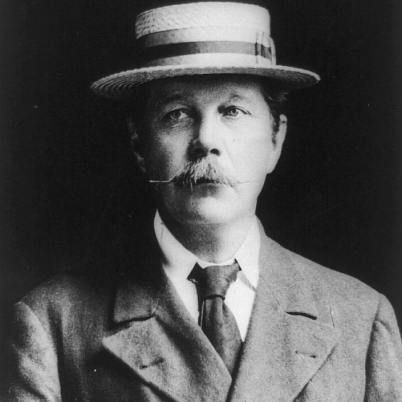
(1859-1930)

Who Was Arthur Conan Doyle?
In 1890, Arthur Conan Doyle's novel, A Study in Scarlet introduced the character of Detective Sherlock Holmes. Doyle would go on to write 60 stories about Sherlock Holmes. He also strove to spread his Spiritualism faith through a series of books that were written from 1918 to 1926. Doyle died of a heart attack in Crowborough, England on July 7, 1930.
On May 22, 1859, Arthur Conan Doyle was born to an affluent, strict Irish-Catholic family in Edinburgh, Scotland. Although Doyle's family was well-respected in the art world, his father, Charles, who was a life-long alcoholic, had few accomplishments to speak of. Doyle's mother, Mary, was a lively and well-educated woman who loved to read. She particularly delighted in telling her young son outlandish stories. Her great enthusiasm and animation while spinning wild tales sparked the child's imagination. As Doyle would later recall in his biography, "In my early childhood, as far as I can remember anything at all, the vivid stories she would tell me stand out so clearly that they obscure the real facts of my life."
At the age of 9, Doyle bid a tearful goodbye to his parents and was shipped off to England, where he would attend Hodder Place, Stonyhurst — a Jesuit preparatory school — from 1868 to 1870. Doyle then went on to study at Stonyhurst College for the next five years. For Doyle, the boarding-school experience was brutal: many of his classmates bullied him, and the school practiced ruthless corporal punishment against its students. Over time, Doyle found solace in his flair for storytelling and developed an eager audience of younger students.
Medical Education and Career
When Doyle graduated from Stonyhurst College in 1876, his parents expected that he would follow in his family's footsteps and study art, so they were surprised when he decided to pursue a medical degree at the University of Edinburgh instead. At med school, Doyle met his mentor, Professor Dr. Joseph Bell, whose keen powers of observation would later inspire Doyle to create his famed fictional detective character, Sherlock Holmes. At the University of Edinburgh, Doyle also had the good fortune to meet classmates and future fellow authors James Barrie and Robert Louis Stevenson. While a medical student, Doyle took his own first stab at writing, with a short story called The Mystery of Sasassa Valley . That was followed by a second story, The American Tale , which was published in London Society .
During Doyle's third year of medical school, he took a ship surgeon's post on a whaling ship sailing for the Arctic Circle. The voyage awakened Doyle's sense of adventure, a feeling that he incorporated into a story, Captain of the Pole Star .
In 1880, Doyle returned to medical school. Back at the University of Edinburgh, Doyle became increasingly invested in Spiritualism or "Psychic religion," a belief system that he would later attempt to spread through a series of his written works. By the time he received his Bachelor of Medicine degree in 1881, Doyle had denounced his Roman Catholic faith.
Doyle's first paying job as a doctor took the form of a medical officer's position aboard the steamship Mayumba, traveling from Liverpool to Africa. After his stint on the Mayumba, Doyle settled in Plymouth, England for a time. When his funds were nearly tapped out, he relocated to Portsmouth and opened his first practice. He spent the next few years struggling to balance his burgeoning medical career with his efforts to gain recognition as an author. Doyle would later give up medicine altogether, in order to devote all of his attention to his writing and his faith.
Personal Life
In 1885, while still struggling to make it as a writer, Doyle met and married his first wife, Louisa Hawkins. The couple moved to Upper Wimpole Street and had two children, a daughter and a son. In 1893, Louisa was diagnosed with tuberculosis. While Louisa was ailing, Doyle developed an affection for a young woman named Jean Leckie. Louisa ultimately died of tuberculosis in Doyle's arms, in 1906. The following year, Doyle would remarry to Jean Leckie, with whom he would have two sons and a daughter.
Books: Sherlock Holmes
In 1886, newly married and still struggling to make it as an author, Doyle started writing the mystery novel A Tangled Skein . Two years later, the novel was renamed A Study in Scarlet and published in Beeton's Christmas Annual . A Study in Scarlet , which first introduced the wildly popular characters Detective Sherlock Holmes and his assistant, Watson, finally earned Doyle the recognition he had so desired. It was the first of 60 stories that Doyle would pen about Sherlock Holmes over the course of his writing career. Also, in 1887, Doyle submitted two letters about his conversion to Spiritualism to a weekly periodical called Light .
Doyle continued to actively participate in the Spiritualist movement from 1887 to 1916, during which time he wrote three books that experts consider largely autobiographical. These include Beyond the City (1893), The Stark Munro Letters (1895) and A Duet with an Occasional Chorus (1899). Upon achieving success as a writer, Doyle decided to retire from medicine. Throughout this period, he additionally produced a handful of historical novels including one about the Napoleonic Era called The Great Shadow in 1892, and his most famous historical novel, Rodney Stone , in 1896.
The prolific author also composed four of his most popular Sherlock Holmes books during the 1890s and early 1900s: The Sign of Four (1890), The Adventures of Sherlock Holmes (1892), The Memoirs of Sherlock Holmes (1894) and The Hound of Baskervilles , published in 1901. In 1893, to Doyle's readers' disdain, he had attempted to kill off his Sherlock Holmes character in order to focus more on writing about Spiritualism. In 1901, however, Doyle reintroduced Sherlock Holmes in The Hound of Baskervilles and later brought him back to life in The Adventure of the Empty House so the lucrative character could earn Doyle the money to fund his missionary work. Doyle also strove to spread his faith through a series of written works, consisting of The New Revolution (1918), The Vital Message (1919), The Wanderings of a Spiritualist (1921) and History of Spiritualism (1926).
In 1928, Doyle's final twelve stories about Sherlock Holmes were published in a compilation entitled The Casebook of Sherlock Holmes .
Having recently been diagnosed with Angina Pectoris, Doyle stubbornly ignored his doctor's warnings, and in the fall of 1929, embarked on a spiritualism tour through the Netherlands. He returned home with chest pains so severe that he needed to be carried on shore and was thereafter almost entirely bedridden at his home in Crowborough, England. Rising one last time on July 7, 1930, Doyle collapsed and died in his garden while clutching his heart with one hand and holding a flower in the other.
QUICK FACTS
- Name: Arthur Conan Doyle
- Birth Year: 1859
- Birth date: May 22, 1859
- Birth City: Edinburgh
- Birth Country: Scotland
- Gender: Male
- Best Known For: Author Arthur Conan Doyle wrote 60 mystery stories featuring the wildly popular detective character Sherlock Holmes and his loyal assistant Watson.
- Journalism and Nonfiction
- Fiction and Poetry
- Astrological Sign: Gemini
- Hodder Place, Stonyhurst
- Stonyhurst College
- University of Edinburgh
- Nacionalities
- Scot (Scotland)
- Death Year: 1930
- Death date: July 7, 1930
- Death City: Crowborough
- Death Country: United Kingdom
CITATION INFORMATION
- Article Title: Arthur Conan Doyle Biography
- Author: Biography.com Editors
- Website Name: The Biography.com website
- Url: https://www.biography.com/authors-writers/arthur-conan-doyle
- Access Date:
- Publisher: A&E; Television Networks
- Last Updated: June 17, 2020
- Original Published Date: April 3, 2014
- Where there is no imagination there is no horror.
Famous British People

Alexander McQueen

The Real Royal Scheme Depicted in ‘Mary & George’

William Shakespeare

Anya Taylor-Joy

Kate Middleton, Princess of Wales

Kensington Palace Shares an Update on Kate

Amy Winehouse

Prince William

Where in the World Is Kate Middleton?

Christopher Nolan

Emily Blunt
Biography Online

Sir Arthur Conan Doyle Biography
Sir Arthur Conan Doyle (22 May 1859 – 7 July 1930) – Scottish writer, physician and spiritualist – best known for his Sherlock Holmes stories.
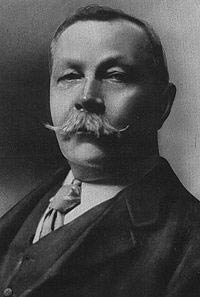
After his father’s death, the burden of supporting a large family fell on Arthur Conan Doyle. To supplement his income he began writing short stories. His first story of note was A Study in Scarlet published in the Beeton’s Christmas Annual 1887 (featuring the first appearance of Sherlock Holmes. This later led to a contract writing more Sherlock Holmes stories for the Strand magazine. It was in these early stories that he developed the character of Sherlock Holmes. It was a character that fascinated the reading public and he soon became one of the best-loved fictional characters. Sherlock Holmes always had an element of mystery – the sharpest mind and his unbelievable powers of observation.
“…when you have eliminated the impossible, whatever remains, however improbable, must be the truth…”
-Sir Arthur Conan Doyle, (Sherlock Holmes)
Sherlock Holmes also had his share of human weaknesses such as smoking and drug addiction. His partner, the sensible, loyal Watson proved the ideal counterbalance to the highly strung genius of Holmes.
The success of Sherlock Holmes enabled Conan Doyle to retire from his medical profession and become a full-time writer. But, it was not the popular Sherlock Holmes stories which inspired him the most. He was more interested in writing serious historical novels and becoming known as a famous writer in this genre. However, his historical novels never brought him the same financial remuneration or fame as his Sherlock Holmes stories did.
After a while, Doyle became increasingly frustrated with the public’s obsession with Holmes, at a time when he was growing weary of the stories. Therefore, he decided to retire Holmes in 1893 by having him plunge into a ravine with his arch-enemy Professor Moriarty. Holmes hoped this would give him more time to write his ‘serious novels’ – but, much to his frustration, he struggled to escape the public’s perception of him as the creator of Holmes. In fact, it wasn’t uncommon for members of the public to equate Conan Doyle with Sherlock Holmes – much to his annoyance.
In 1900, Conan Doyle served in a field hospital in the Boer war. He also later published a pamphlet The War in South Africa: Its Cause and Conduct , which sought to justify British actions in the unpopular Boer war. For his services in the war, he was knighted, though undoubtedly his fame as the creator of Sherlock Holmes was also a factor.
In, 1906, his first wife, Louisa Hawkins, died after a long battle with Tuberculosis. It was a big blow to Conan Doyle who had moved to Switzerland to help her health.
After getting married to his second wife, Denise Steward a year later, he again was in the need for more money to finance a lavish new family home. Again, Doyle turned to his ever-profitable Holmes, securing a great deal with an American publisher for more Holmes stories. Thus, Holmes was resurrected, Conan Doyle cleverly wrote that Holmes had never died in the fall but cunningly escaped Moriarty and had gone into hiding from his enemies.
Conan Doyle’s most famous character was a man of great reason and science, so it was perhaps ironical that Conan Doyle was to become greatly interested in the new religion of spiritualism. A large part of spiritualism was the contacting of deceased relatives through seances. For many years, Conan Doyle had toyed with the ideas, but the traumatic years of the First World War (where he lost a brother and son) changed his outlook to that of a fervent believer. Conan Doyle became one of the chief proponents and public faces for spiritualism. Conan Doyle felt that this proof of life beyond death could give fresh impetus to religion.
“Religions are mostly petrified and decayed, overgrown with forms and choked with mysteries. We can prove that there is no need for this. All that is essential is both very simple and very sure.” ( The New Revelation 1918)
The success of Conan Doyle’s Holmes enabled him to pursue many different interests. As well, as researching spiritualism, Conan Doyle found time to fight miscarriages of justice such as the George Edalji case.
“I should dearly love that the world should be ever so little better for my presence. Even on this small stage, we have our two sides, and something might be done by throwing all one’s weight on the scale of breadth, tolerance, charity, temperance, peace, and kindliness to man and beast. We can’t all strike very big blows, and even the little ones count for something.”
Arthur Conan Doyle, Stark Munro Letters (1894)
Citation: Pettinger, Tejvan . “ Biography of Sir Arthur Conan Doyle ”, Oxford, UK. www.biographyonline.net. Published 25th June 2009. Last updated 15 February 2018.
The Doctor and the Detective: A Biography of Sir Arthur Conan Doyle
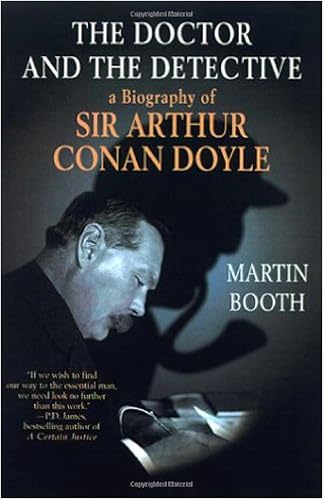
The Doctor and the Detective: A Biography of Sir Arthur Conan Doyle at Amazon
The Complete Sherlock Holmes

The Complete Sherlock Holmes at Amazon
Related pages
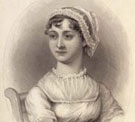
Arthur's parents, Mary Foley Doyle and Charles Altamont Doyle, had moved to Scotland from London, hoping that Charles could advance his career in architecture. Having inherited some measure of his family's artistic talent, Charles began with every hope of success, but never realized his dreams. Plagued by depression and alcoholism, Charles was a distant father and husband, becoming so detached from reality that he ended life in an asylum. With considerable charity, his son Arthur later said of him, "My father's life was full of the tragedy of unfulfilled powers and of underdeveloped gifts."
Sir Arthur Conan Doyle. A Biographical Introduction
Dr andrzej diniejko , d. litt.; contributing editor, poland.
[ Victorian Web Home —> Visual Arts —> Authors —> Arthur Conan Doyle —> Next ]
Introduction
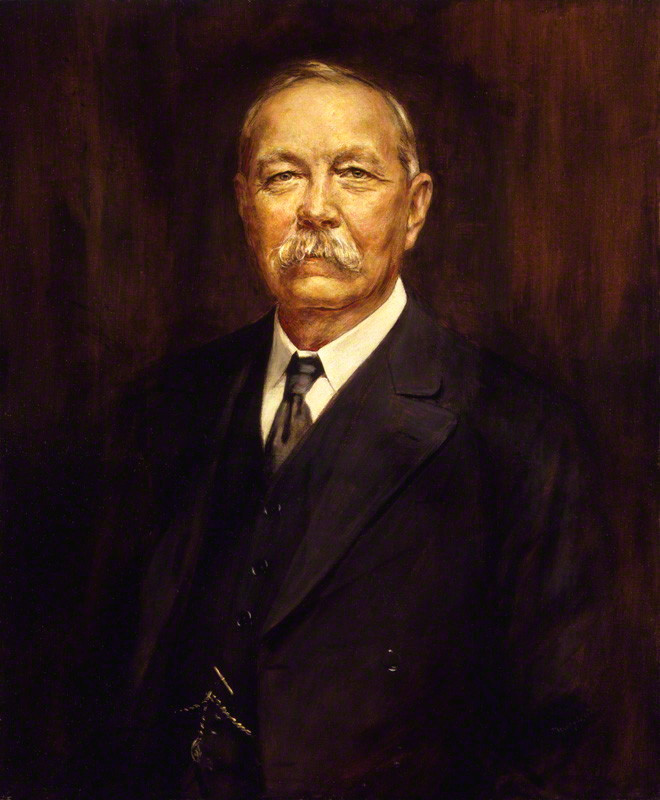
Sir Arthur Conan Doyle is known all over the world as the creator of one of the most famous fictional characters in English literature, the master detective Sherlock Holmes, but he was much more than the originator of modern detective literature. He was a man of many talents and pursuits: a medical doctor, multi-talented sportsman, prolific and excellent storyteller, keen patriot and a staunch imperialist, as well as a campaigner against miscarriages of justice.
He tried his hand in many genres of fiction and poetry. He wrote detective stories, historical and social romances, political essays and an innumerable number of letters to the press, public figures, acquaintances and friends, to his adored mother and other family members. Last but not least, he was a formidable public speaker and a dedicated Spiritualist, who investigated and popularised supernatural phenomena. A Victorian to the bone, he cherished the ideals of duty, chivalry, honour and respectability.
The origin of the surname
Doyle had an ancient Irish surname, ranking twelfth in the list of the most common surnames in Ireland. It can be derived from the Gaelic Dub-Ghaill ('dark foreigner'), the name which the Celts gave to the Vikings, who began settling in Ireland more than 1,000 years ago, or from the Anglo-Norman surname of d'Oillys, who arrived in England with William the Conqueror and then settled in Ireland.
There is a controversy about the full name of the author of the Sherlock Holmes stories. He always signed himself: A. Conan Doyle. Whether Conan is a middle name or the first part of the compound surname is a matter of dispute among Doylists. The entry in the register of baptisms of St. Mary's Cathedral in Edinburgh gives 'Arthur Ignatius Conan' as his Christian names, and 'Doyle' as his surname.

Sir Arthur Conan Doyle as a child, with his father Charles Altamond (Adcock 96).
The Doyle family originated in Ireland and were dedicated Roman Catholics. Arthur Conan Doyle's grandfather, John Doyle (c. 1797-1868), a tailor, was born in Dublin into a devoutly Catholic family. All John's siblings entered Catholic religious orders, but John, who exhibited artistic talents, decided to become a painter. In 1820, he married Marianne Conan, a daughter of a Dublin's tailor. In c. 1822, John and Mary Doyle moved to London with their baby daughter and rented a house in Soho, which was inhabited by artists and writers. John wanted to become a portrait painter, but soon he gained fame as a political cartoonist under the pseudonym of HB. In 1833, he moved with his wife and children to a large house near Hyde Park at 17 Cambridge Terrace, where he subsequently entertained notable people including Sir Walter Scott, Charles Dickens, Benjamin Disraeli, William Makepeace Thackeray, Dante Gabriel Rossetti, John Millais, and Edwin Lanseer.
In 1832, Charles Altamont Doyle, Sir Arthur's father, was born. He grew up with one sister and three brothers. All his brothers made splendid careers: James William Edmund (1822-1892) was a historian and history illustrator; Richard (1824-1883) became a Punch cartoonist like his father; and Henry Edmund (1827-1892) became an art critic and a painter. In 1869, he was appointed Director of the National Gallery of Ireland.
Charles (1832-1893), Arthur's father, was not as successful as his elder brothers. Although he exhibited an original artistic talent, he was not able to earn a living from his paintings. At the age of 17, he moved to Edinburgh, Scotland, and got the job of a clerk in the Office of Works as an architectural draftsman. He rented lodgings in the New Town, a central area of Edinburgh, in a house owned by a Roman Catholic widow Catherine Foley. In 1855, he married his landlady's daughter, Mary Josephine (1837-1921), aged seventeen, with whom he had nine children, seven of whom survived infancy.
Arthur Ignatius Conan Doyle was born on May 22, 1859, at 11 Picardy Place, Edinburgh. He was baptised two days later in nearby St. Mary's Roman Catholic Church. Arthur was raised in a dysfunctional family because his father, an impecunious artist, was neurotic and could hardly support the family with a clerk's meagre salary. He developed a serious drinking problem, which eventually brought him to a mental asylum in 1881. Arthur's mother was a strong-minded Irishwoman, who traced her ancestry to the Plantagenets. She held the family together and carried the burden of running the household and raising the children. In his Memories and Adventures Conan Doyle writes that his boyhood in Edinburgh was
Spartan at home and more Spartan at the Edinburgh school where a tawse-brandishing schoolmaster of the old type made our young living miserable. From the age of seven to nine I suffered under this pock-marked one-eyed rascal who might have stepped from the pages of Dickens. [11]
Arthur's mother, who knew well contemporary English and French authors, was a masterful storyteller, and she inspired her son to take interest in history and literature. She exerted a strong influence on his future career. She told him stories of their family ancient aristocratic roots. At the age of about five Arthur wrote his first story, which had only thirty-six words. It was about a Bengal tiger and a hunter.
At the age of seven Arthur began his education at Newington Academy in Edinburgh. Then thanks to his mother and the financial help of his uncles, particularly, Michael Conan, a Paris correspondent for the Art Journal , Arthur received good education. First, he was sent for a year to Hodder, a prep school which prepared for a prestigious Jesuit school, Stonyhurst College, in Lancashire, which Arthur started in autumn 1870. As Andrew Lykett writes:
Stonyurst was conservative and ultra-montane. This meant that its Rector or Head, Father Edward Ignatius Purbrick, followed a firm papal line in seeking to stem the tide of materialism in post- Darwinian Britain. [Lycett 32]
Arthur did not like the strict discipline and excessive religious instruction which the Jesuits had imposed on pupils. He was soon disillusioned with the Christian faith and when he was leaving the school he became almost an agnostic. While at Stonyhurst College, Arthur edited a school paper called Wasp and next the Stonyhurst Figaro , in which he revealed his talent as a future story writer. He also became a keen sportsman. In his later life he played cricket, rugby, football and golf, and was a cross-country skier.
After passing the London Matriculation Examination at Stonyhurst, Arthur spent a year in a Jesuit grammar school, Stella Matutina, in Feldkirch, Austria, where he was to learn German. He did not speak much German because he was surrounded by other English boys, but he discovered the short stories of Edgar Allan Poe, such as “The Gold Bug” and “The Murder in the Rue Morgue,” which later exerted a great influence on his detective fiction. At Feldkirch he also edited a student paper, the Feldkirch Gazette , which carried the motto “Fear not, and put it in print.” However, when he wrote an editorial criticising the Jesuit teachers' custom of censoring the boys' letters, the paper was shut down. Arthur's uncle, Michael Conan, a famous journalist, encouraged him to write, but he did not take this idea seriously at that time. (Pascal 18)
As a young boy Arthur was an avid reader, and one of his most favourite books was Sir Walter Scott's Ivanhoe . His other early readings included the novels of Robert Michael Ballantyne, Mayne Reid, James Fenimore Cooper, and Jules Verne. He spent much of his spare time reading, and once he borrowed so many books from the local library that, as he recalls in Memories and Adventures , a special meeting of a library committee was held in his honour, at which a bye-law was passed that no subscriber should be permitted to change his book more than three times a day. (Pascal 13)
In 1876, Arthur Conan Doyle began to study medicine at his mother's suggestion at the University of Edinburgh, which had been one of the best medical schools at that time. He met Dr. Joseph Bell (1837-1911), the famous lecturer and an expert in the use of deductive reasoning, who inspired the character of Sherlock Holmes, and the physiologist, Professor William Rutherford (1839-1899), a model for Professor Challenger. He also studied under Sir Robert Christison (1797-1882), one of the founding fathers of modern toxicology. (Harris 449)
During his medical studies, Arthur desperately tried to earn money for his living and to support his family. 1879, he worked as a medical assistant to Doctor Hoare in the town of Aston (now a district of Birmingham); next he worked in Sheffield and in Ruyton-XI-Towns, Shropshire. As a student he began writing short stories to earn some extra money. His earliest fiction, “The Haunted Grange of Goresthorphe,” was rejected by Blackwood's Magazine , but The “Mystery of the Sasassa Valley” was accepted for publication by Chambers Journal . He also published a scientific article, “Gelseminum as a Poison” in the British Medical Journal .
In 1880, Conan Doyle took a break from his studies and went on a daring six-month sea voyage to the Arctic on the whaling ship Hope. All British whale ships had to carry a surgeon, even if he was a 20 year-old medical student. During the voyage Doyle wrote a fascinating diary which was published recently. This voyage inspired him to write the story, “The Captain of the Pole Star.”
Medical profession and part-time authorship
Finally, in 1881, Conan Doyle passed qualifying examinations and settled in the Portsmouth suburb of Southsea in the next year to begin his own medical practice. As a keen sportsman, he joined the Southsea Bowling Club and the North End Cricket Club, and started playing rugby. He also joined the Literary and Scientific Society. Soon he found out that he was not satisfied with his medical career and decided to try his hand in writing fiction. From a young age he found pleasure in writing letters and articles and, finally, composing short stories.
In Southsea, Doyle, aged 23, wrote articles and short stories for London Society , All the Year Round , Temple Bar , Lancet , and The British Journal of Photography . He also wrote his first novel, The Narrative of John Smith . Its manuscript was lost in the mail on its way to the publisher. Although not good fiction, the novel provides a fascinating insight into the young writer's mind. It was published in 2011.
This early novel is about a middle-aged man who is stricken with gout and confined to his bed for a week. He attempts to write a book, and expounds his views on topics such as medicine, religion, literature and interior design. Many of the opinions reflect the author's outlook, e.g. his belief in the importance of science and medicine, and his scepticism about religious dogma.
In the 1880s Conan Doyle continued his private medical practice at Southsea, which turned out to be far from prosperous, and published fiction in various magazines. In 1886, he wrote a novella, A Study in Scarlet , which introduced the character of Sherlock Holmes and Dr Watson. Because of its brevity it was not published as a separate book, but was included in Beeton's Christmas Annual in the following year. The Annual was not very popular and Doyle decided to write historical romances instead of detective fiction.
Conan Doyle often wrote to his mother about his longing to have a wife. Eventually, in 1885, he married Louise 'Toulie' Hawkins, whom he had met while treating her terminally ill brother Jack. Surprisingly, instead of going on a honeymoon with his young wife, he went on a tour of Ireland with the Stonyhurst Wanderers, the school's old boys cricket team. Four years later Arthur and Louise had their first child, Mary, and in 1892 their second child, Arthur, known as Kingsley.
In 1890, Conan Doyle studied briefly ophthalmology in Vienna. He then visited the Hygiene Institute in Berlin, where Robert Koch's cure for tuberculosis was being tested, and reported on the cure, first in a letter to the Daily Telegraph , and next in an article “Dr Koch and his Cure,” published in the Review of the Reviews . Although he had some doubts about the curative properties of the new procedure, he was impressed by Koch himself as “a model of scientist as hero.” (Kerr 84)
After return to England, Conan Doyle moved to London with his wife and daughter to start practice as an eye specialist at 2 Upper Wimpole Street. However, as he wrote in his Memories and Adventures , “not one single patient had entered the threshold of my room.” (96) Having no patients he had plenty of time to reconsider his career, and eventually, he decided to undergo a significant metamorphosis from doctor to writer (Kerr 91). In August, Doyle decided to give up medicine and make his living as a full-time professional writer. He next moved with his family to Tennison Road in South Norwood to concentrate only on writing. He published the first six “Adventures of Sherlock Holmes” in the Strand Magazine , and in 1890, the second Sherlock Holmes novel, The Sign of the Four , in Lippincott’s Monthly Magazine . When the stories were published in book form as The Adventures of Sherlock Holmes (1892), “the Baker Street mania finally swept the public. By then Conan Doyle had launched himself as a full-time professional writer.” (Dirda 12)
Life at Undershaw and Windlesham
In 1893, Louise was diagnosed with tuberculosis. During the first years of the illness, the Doyles spent much time in Switzerland, hoping that local climate would help her. While in Switzerland Conan Doyle practised winter sports and became the first British to cross the Alpine pass in snow shoes. After return from Switzerland to London, Conan Doyle met the novelist Grant Allen at luncheon, who told him that he had also suffered from consumption and that he had found the climate of Surrey beneficial for his health. Doyle rushed to Hindhead, the highest village in Surrey, with buildings at between 185 and 246 metres above sea level. He immediately bought a plot of ground, and commissioned a house to be built before leaving with his wife for Egypt in the autumn of 1895. The house, called Undershaw, which was designed for rest and recuperation of his wife, was ready in 1897.
During the years at Undershaw Conan Doyle wrote The Hound of the Baskervilles , The Return of Sherlock Holmes , The Great Boer War , Sir Nigel , and many other short stories and nonfiction writings. Louise died in 1906 at the age of 49. Shortly after the death of his wife, Conan Doyle married Jean Leckie (1872-1940), a beautiful daughter of a wealthy Scottish family, who rode horses, hunted, and had trained as a singer. (Pascal 94) She turned out to be the greatest love of his life. He had met her at a party in 1896, while Louise was still alive and fell in love at first sight. It appears that the relationship with Jean was platonic until Louise died. They were married a year later and he bought the house Windlesham, near Jean’s parents in Crowborough, Sussex. Conan Doyle had two children with his first wife: Mary Louise (1889-1976) and Kingsley (1892-1918), and three children with his second wife: Denis Percy Stewart (1909-1955), Adrian Malcolm (1910-1970) and Jean Lena Annette (1912-1997).
Literary career
Conan Doyle’s literary output is prodigious. During his writing career Sir Arthur wrote twenty-one novels and over 150 short stories. He also published nonfiction, essays, articles, memoirs and three volumes of poetry. He left thousands of letters to the press, his mother (about 1500 letters), family, friends and acquaintances, including Winston Churchill, P. G. Wodehouse, Theodore Roosevelt, and Oscar Wilde. Jeffrey and Valerie Meyers, editors of The Sir Arthur Conan Doyle Reader: From Sherlock Holmes to Spiritualism (2002) write:
He shared Dickens's sense of justice and social responsibility, his warm humanity and delight in the lively individuality of the characters he created. Like Dickens, he published his stories and novels, often in serial form, in the weekly magazines that were the staple of popular entertainment in the late nineteenth century. Like his younger contemporary and friend, H. G. Wells, he used his scientific education and medical training in his fiction and challenged the prevailing belief in the idea of progress. Like Wells, he also became an important public figure whose opinion was sought on the crucial issues of the day, an influential speaker at a time when the lecture was a popular event. [x]
The Sherlock Holmes stories
Between 1887 and 1927, Doyle wrote four novels and fifty-six stories with Sherlock Holmes, a brilliant London-based “consulting detective” famous for his astute observation, deductive reasoning and forensic skills to solve difficult cases. Holmes's fictional forefather was Edgar Allan Poe's detective C. Auguste Dupin, but it was Conan Doyle who first introduced to literature the character of the scientific detective. Holmes, one of the best known and most popular characters in English literature, is not only a successful master detective, but he is the epitome of the Victorian and imperial values.
Sherlock Holmes embodies the system that he comes to protect. He is the man of reason, of science, of technology; he is from the upper class and was educated at Oxford; he eventually becomes rich; and he frequents best city clubs and other haunts of the gentleman. [Lehan 84]
The first novel that introduced Sherlock Holmes and Dr Watson of 221B Baker Street, London, A Study in Scarlet , a tale of murder and revenge, appeared in Beaton’s Christmas Annual in 1887, and the second, The Sign of the Four , in Lippincott's Monthly Magazine in 1890. After publishing the first set of Sherlock Holmes stories in the Strand Magazine between 1891 and 1893, Doyle was not particularly proud of his detective fiction. He planned to write an opera, a book of medical short stories and a Napoleonic saga. He believed that historical romances, and not his detective stories, were his most important work. (Wilson 22) In 1893, he tried to kill off Holmes at the height of his popularity by plunging him over the Reichenbach Falls with Professor Moriarty, Holmes's greatest enemy, but in 1902 Holmes appeared in The Hound of the Baskervilles because the reading public demanded further adventures of the great detective. As a matter of fact, Doyle did not bring Holmes back to life, but told a story that had taken place before his disappearance at the Reichenbach Falls. (Redmond 24) However, there was such a great public outcry that he eventually resurrected the master detective in “The Adventure of the Empty House” in the 1903 October issue of the Strand Magazine .
Doyle created the first truly great detective in fiction and gave a great impetus to detective story as a fictional form. The tremendous popularity of Sherlock Holmes in the late Victorian and Edwardian periods can be explained by the fact that he not only embodied the late Victorian faith in the power of logic and rationality, but above all restored confidence that the British were capable to maintain law and order not only in Britain but also in the Empire at large.
The Professor Challenger stories
Although the Sherlock Holmes stories are his best fiction, Conan Doyle wrote novels and short stories in many genres. These include historical fiction, horror and suspense, psychological thriller, science fiction, poetry, and plays for the stage. In addition, Sir Arthur wrote nonfiction works on a variety of subjects: essays on literature, accounts of England’s involvement in the South African War and World War I, memoirs and diaries, writings about photography, works on the paranormal, occult and Spiritualism .
Arthur Conan Doyle is also the author of fantasy and science fiction, which includes three novels and two short stories: The Lost World (1912), The Poison Belt (1913), The Land of Mist (1926), “The Disintegration Machine” (1928), and “When the World Screamed” (1929). The Lost World introduced his second most famous character, Professor George Edward Challenger, who guides an expedition deep into an isolated plateau in the South American jungle where some prehistoric animals (dinosaurs) and indigenous race of ape-like people still live. Challenger, a scientist of enormous intellect and adventurer, was designed to be a character to rival Holmes. The Poison Belt is an apocalyptic novel that features the same characters who appear in The Lost World . Astronomers discover that the Earth is about to be engulfed in a belt of poisonous gas “ether” from outer space. Prior to (apparently) extinguishing all life on the planet, the belt causes a mysterious outbreak of illness whose symptoms are irritability, loss of inhibition, coma, and (pseudo) death. (Harris 453) In The Land of Mist (1926) Professor Challenger is converted to Spiritualism.
The Challenger stories, which recall Jules Verne’s science fiction, are less popular of Doyle's fictions than the Sherlock Holmes stories. However, they contain interesting narrative structure and their themes concern imperialism, positivist science, the male role, evolution, degeneration theory and atavism. (Christensen 121)
Historical romances
Arthur Conan Doyle wrote several popular works of historical fiction. The first was Micah Clarke (1889), which is set in the seventeenth century during the Monmouth Rebellion. The White Company (1891) recounts the history of a company of medieval English archers during the Hundred Years' War, in the years 1366 and 1367. In 1906, Doyle published its prequel, Sir Nigel , which is set in the early phase of the Hundred Years' War. Doyle also wrote a series of short stories about a Napoleonic hussar named Etienne Gerard, which were first published in magazines and eventually in book form: The Exploits of Brigadier Gerard (1896) and Adventures of Gerard (1903). They are “brilliant evocations of the Napoleonic ethos.” (Dirda 73) Earlier in 1892, he published The Great Shadow and Other Napoleonic Tales . It should be noted that Conan Doyle was often disappointed at being famous chiefly for the creation of the Sherlock Holmes character. He had a much higher esteem of his historical novels than the Sherlock Holmes stories.
Arthur Conan Doyle also wrote nonfiction. In 1907, he published Through the Magic Door , a long essay about the charisma and charm of books. He also wrote several books dealing with public topics, such as The Crime of the Congo (1910). He also published A History of the British Campaign in France and Flanders ( 6 vols., 1916-1920), and A Visit to Three Fronts (1916). In 1914, Doyle wrote several pamphlets about the war. In 1924, Doyle published his excellent autobiography, Mysteries and Adventures , which recounts his life from early childhood, education, voyages as a ship's doctor, medical practice in Southsea, his literary endeavours, experiences from the Boer war, legal and political campaigns, interests in sports, and commitment to spiritualism.
In 1900, Doyle served in the Boer War as a volunteer doctor in the Langman Field Hospital at Bloemfontein between March and June. After return home he wrote a lengthy book, The Great Boer War , which sought to justify the British cause and to emphasise the great need for army reform and modernisation. The book was hailed in the press for its accuracy and fairness. (Pascal 99) In 1902, Doyle received his knighthood from the British Crown for a pamphlet, The War in South Africa: Its Causes and Conduct , in which he defended England's position in the Boer War in South Africa and for his service to the nation. He was reluctant to accept the title, but his mother talked him into it. (Pascal 103) There is also a theory that king Edward VII, who was an avid reader of Sherlock Holmes stories, knighted him to encourage him to write more stories about the 'master' detective'.
Interest in spiritualism
Arthur Conan Doyle became interested in the paranormal in the late 1880s and studied it for the rest of his life. In the last quarter of his life, he abandoned literary career and devoted himself to spreading the spiritualist message throughout the world. He lectured on spiritualism in Great Britain, Australia, and South Africa, and the United States, during which he covered 55,000 miles and addressed a quarter of a million people. In 1926, he published The History of Spiritualism in two volumes at his own expense.
Other accomplishments
Sir Arthur was a large, vigorous, active man, with all of the Englishman's traditional fondness for sports. Throughout all his adult life he wore the “walrus” moustache of the late Victorian era. He was an outstanding sportsman; he played football, and billiards. While living in Southsea he was a goalkeeper for Portsmouth Association Football Club. He was also a keen cricketeer. “For many years Conan Doyle even belonged to a rather literary cricket team called the Allahakbarries, its name punningly combining the Arabic formula praising God with a nod to the team’s captain J. M. Barrie (creator of Peter Pan).” (Dirda 13) Between 1899 and 1907, he played 10 first-class matches for the Marylebone Cricket Club. He also practised boxing and was a pioneer motorist and a rally-driver. In the 1890s, he started ski-touring to Switzerland. He was an occasional bowler and keen golfer. In 1910, he was elected captain of the Crowborough Beacon Golf Club, East Sussex.
Conan Doyle was always a partisan of the underdog. He campaigned successfully against miscarriages of justice. He conducted a long campaign to defend the half-British and half-Indian solicitor George Edaljii, who had been accused of mutilating animals. Julian Barnes' novel, Arthur and George (2005) recounts this episode in his life. Conan Doyle also campaigned for the release of Oscar Slater, a German Jew born in Upper Silesia, who was accused of murdering an old woman in Glasgow. Doyle exposed inconsistencies in the police investigation and Slater was finally freed.
Conan Doyle was also an early champion of building the Channel Tunnel, which, he believed, was necessary, “for the deployment of troops and armaments in France in an anticipation a German war.” (Wynne 21) For his various accomplishments he received the honorary degree of LL.D. from the university of Edinburgh in 1905, and was a knight of grace of the order of St. John of Jerusalem.
Death and legacy
Towards the end of his life Sir Arthur suffered angina which he contracted during his exhausting world tours. He died of heart failure on July 7, 1930, in Crowborough, East Sussex, leaving his widow Jean, their three children, Dennis, Adrian and Jean, and his daughter Mary, by his first wife. His eldest son, Kingsley, who served in World War One, was seriously wounded at the 1916 Battle of the Somme; later he developed pneumonia which he contracted during his convalescence and died in 1918 aged 25.
The last words of Conan Doyle were addressed to his wife. He whispered smiling to her: “You are wonderful.” (Davis xvi) He was 71 years old. Sir Arthur and his second wife are buried at the New Forest Church of All Saints, Minstead. Legend has it that as a devoted spiritualist, he was first buried in an upright position in the garden of his home at Crowborough. The house in Crowborough was sold, but the graves remained until 1955, when the Doyle family decided to fulfil Lady Jean's original wish that they be buried together at All Saints. The remains of Sir Arthur and Lady Jean were exhumed from the garden and reinterred in the churchyard. After a short private ceremony the couple were laid horizontally to rest. The epitaph on the gravestone in the churchyard at Minstead in the New Forest, Hampshire, reads: “Steel True, Blade Straight, Arthur Conan Doyle, Knight, Patriot, Physician & Man of Letters.”
Sir Arthur Conan Doyle was a versatile and complex personality; he was physician by education, keen sportsman, war correspondent, campaigner for social justice, creator of the world's most famous fictional detective Sherlock Holmes, author of historical and social novels, and active Spiritualist. As Douglas Kerr has written in his recent book: “Arthur Conan Doyle was, arguably, Britain's last national writer.” (13) An Irish by ancestry, Scottish by birth and upbringing, and British by choice, devoted to Crown and Empire, he still remains one of the most popular British authors and a national icon.
Related Material
- References and Further Reading
Last modified 22 March 2016
Not logged in
Page actions.
- View source
Arthur Conan Doyle (22 May 1859 - 7 July 1930). M.D., Kt, KStJ, D.L., LL.D. , Writer, Sportsman, Artist, Poet, Politician, Business man, Justicer, Inventor, Patriot, Spiritualist...
The Arthur Conan Doyle Encyclopedia is an online repository of all works written by Sir Arthur Conan Doyle ( fictions , essays , articles , poems , plays , lectures , letters , manuscripts ...), but also any materials related to him ( newspaper articles , interviews , photos , movies ...).
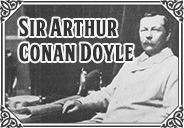
Adaptations
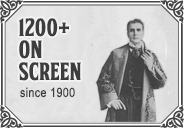
Conan Doyle: Mystery and Adventure
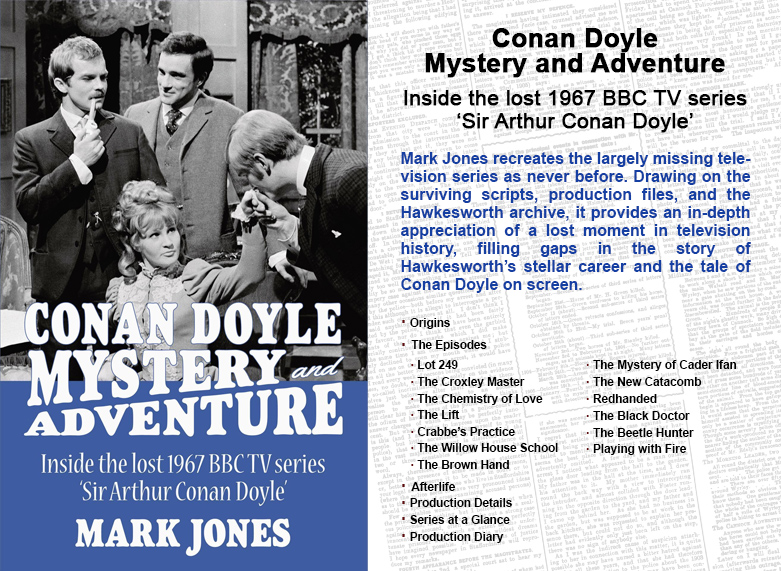
New Book: My Own Story, by George Edalji
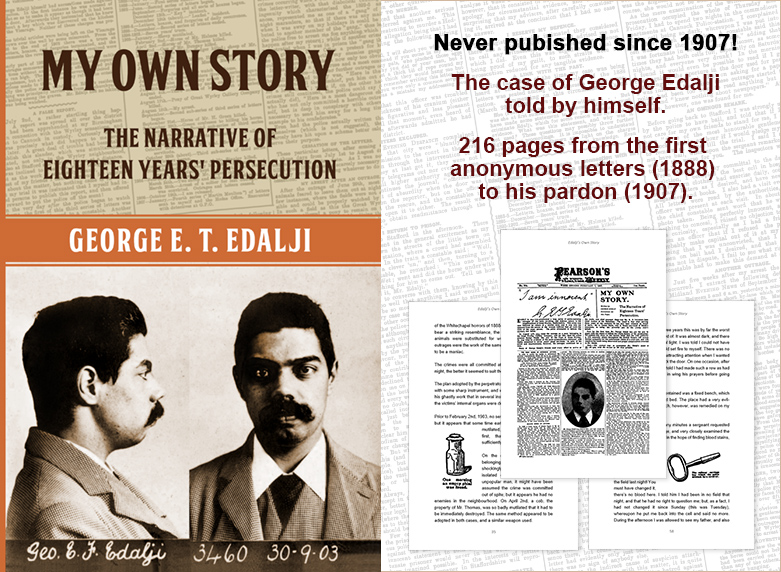
Doings of Doyle: Podcast

A Chronology of the Life of Arthur Conan Doyle: New Edition
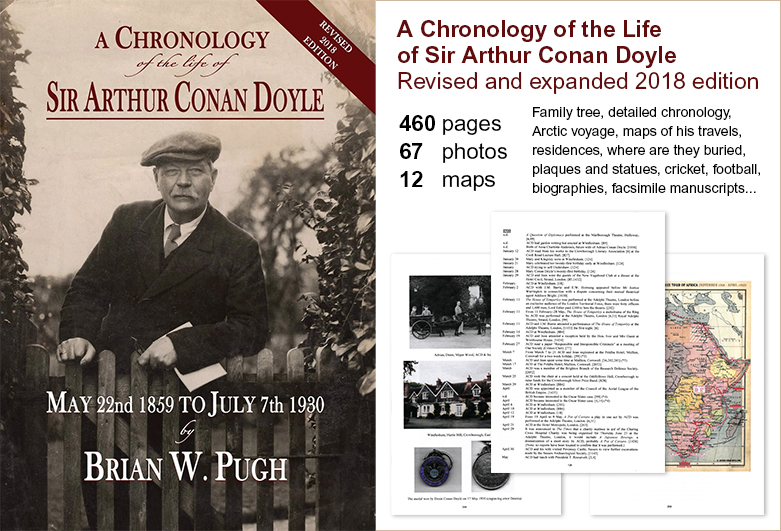
- Sir Arthur Conan Doyle
- A Life in Pictures
- A Life in Movies
- Sherlock Holmes
- Brigadier Gerard
- Sir Nigel Loring
- Captain Sharkey
- All fictions
- Search Fictions
- Essays, Articles
- His Handwriting
- Manuscripts
- Drawings & Paintings
- Illustrators
- Periodicals
Contact/Support
- Special pages
- Cite this page
User page tools
- What links here
- Related changes
- Printable version
- Permanent link
- Page information
- This page was last modified on 9 April 2024, at 23:52.
- Privacy policy
- About The Arthur Conan Doyle Encyclopedia
- Disclaimers
- Skip to primary navigation
- Skip to main content
- Skip to primary sidebar
- Skip to footer
Book Summary
booksummary.net
Read original fairy tales >>
Arthur Conan Doyle
Sir Arthur Conan Doyle was born in 1859 in Edinburgh, Scotland. A prolific writer of much renown, his books were mostly detective fiction. He is most famous for the Sherlock Holmes stories, but also wrote such things as the Lost World. He also popularized the mystery of the wreck of the Mary Celeste, and wrote about Professor Challenger, a rude, crude, genius.
Doyle was a highly trained doctor who started out his career as a ship's doctor. When he came to settle in London, he opened up a practice and while waiting for patients, he began to write. When he first tried to get his stories published, he had trouble, like most writers. But, when he finally started selling his Sherlock Holmes stories to the Strand Magazine, they began to gather a following. When he became tired of Sherlock he tried to stop writing him, even charging a huge price. But, his publisher agreed to the price, making Doyle one of the highest paid authors of his time. Doyle tried to kill Sherlock along with Professor Moriarty. But, the outcry was so huge, that he had to bring him back and write that only Moriarty had died.
After writing "The War in South Africa: It's Cause and Conduct", Arthur Conan Doyle was knighted by King Edward VII. The English government had taken a lot of flack for their part in the war. He also helped investigate a few criminal cases and opened up two cold cases, exonerating the men falsely accused. Because of his work The Court of Criminal Appeal was established.
Because of a string of losses of loved ones close together, including his wife, son and two brothers, Doyle became a spiritualist. He joined the Ghost Club, and became friends with Harry Houdini, until Harry refused to admit his magic was more than just illusion. Doyle became convinced Houdini was a mystic.
In July of 1930, Sir Arthur Conan Doyle passed away due to a heart attack. His last words was to his wife, he said, "you are wonderful." He was originally buried in the rose garden behind his manor, because he was a spiritualist and not a Christian, he couldn't be buried in a church. But, when his wife passed, he was reburied next to his wife in Minstead churchyard in Hamshire. The inscription on his gravestone is; "Steel True/ Blade Straight/ Arthur Conan Doyle/ Knight, Patriot, Physician, and a Man of Letters."
Hound of Baskervilles
Summary Arthur Conan Doyle
"The Hound of the Baskervilles" was serialized in The Strand Magazine Sir Arthur Conan Doyle from August 1901 through April 1902. It is a brilliantly written mystery set on Dartmoor in Devon in England's West Country. In the story, a mythical beast is terrorizing the Baskerville family. The story begins with the mysterious death of […]
The Adventures of Sherlock Holmes
In 1891 and '92 Arthur Conan Doyle wrote twelve short stories for The Strand Magazine published in London. The stories all use the voice of Dr. Watson. His stories are about the exploits of the genius, Sherlock Holmes. A righter of wrongs, Holmes helps people to find justice, especially if the problems are difficult to […]
Information
- Index of Writers
- Digital Books
Study guides
- Book Analyses
- Book Summaries
- Character Analyses
- Biographies
BookSummary.net
The largest collection of book summaries, analyses, books, study guides and educational resources for students and teachers. Here, you'll find works from more than 250 greatest authors of all time. [more]
The Adventures of Sherlock Holmes

52 pages • 1 hour read
A modern alternative to SparkNotes and CliffsNotes, SuperSummary offers high-quality Study Guides with detailed chapter summaries and analysis of major themes, characters, and more.
Chapter Summaries & Analyses
“A Scandal in Bohemia”
“The Red-Headed League”
“A Case of Identity”
“The Boscombe Valley Mystery”
“The Five Orange Pips”
“The Man with the Twisted Lip”
“The Adventure of the Blue Carbuncle”
“The Adventure of the Speckled Band”
“The Adventure of the Engineer’s Thumb”
“The Adventure of the Noble Bachelor”
“The Adventure of the Beryl Coronet”
“The Adventure of the Copper Beeches”
Character Analysis
Symbols & Motifs
Important Quotes
Essay Topics
Discussion Questions
Summary and Study Guide
Sir Arthur Conan Doyle’s (1859-1930) The Adventures of Sherlock Holmes was published in 1892 as a collection of 12 short stories. The texts detail some of the earliest cases of the fictional detective Sherlock Holmes as narrated by his friend and collaborator, Doctor John Watson . The stories appear in the order in which they were originally published in The Strand Magazine .
Conan Doyle was born in Edinburgh to Catholic parents, the second of 10 children. The family’s situation was fraught due to his father’s alcoholism and eventual commitment to an asylum. With the help of wealthy relatives, however, Conan Doyle received an education at several schools in England and Austria, and later completed a medical degree at the University of Edinburgh. During his time at medical school, Conan Doyle began writing short stories. His earliest known text is the manuscript “The Haunted Grange of Goresthorpe” from the late 1870s, while his first published story is “The Mystery of Sasassa Valley” (1879).
Get access to this full Study Guide and much more!
- 7,500+ In-Depth Study Guides
- 4,900+ Quick-Read Plot Summaries
- Downloadable PDFs
Sherlock Holmes appears in a total of 56 short stories and several novels. The detective was inspired by Conan Doyle’s university instructor Joseph Bell, considered one of the pioneers of forensic science. Bell was able to observe minute details about his patients and use them to deduce their condition. Conan Doyle began submitting short stories to the newly inaugurated The Strand Magazine. The detective’s adventures quickly become popular, boosting the journal’s circulation.
Conan Doyle, however, had an ambivalent attitude toward his creation, as he believed the Holmes stories overshadowed his other writing. The author tried various strategies of getting out of writing about the consulting detective, such as increasing his fees and even killing Holmes in “The Final Problem” (1893). However, public demand forced him to revive the detective.
The SuperSummary difference
- 8x more resources than SparkNotes and CliffsNotes combined
- Study Guides you won ' t find anywhere else
- 100+ new titles every month
Conan Doyle is also known for his passion for the occult in his later life. Despite his scientific training, the writer developed a lasting interest in spiritualism after World War I, possibly in reaction to his son’s and younger brother’s deaths. He championed several occultists and mediums who were later proven to be fake, damaging his credibility with the public.
This study guide is based on the 1960 Popular Library edition.
Plot Summary
The book consists of 12 unrelated stories narrated by Doctor John Watson. The narrator often alludes to some of the other stories in the volume, as well as the earlier novels featuring Sherlock Holmes.
“A Scandal in Bohemia” features Irene Adler , a character who becomes a prominent figure in many contemporary adaptations of Sherlock Holmes. She is a beautiful and intelligent retired opera singer who has obtained a compromising photograph of her former paramour, the hereditary king of Bohemia. The king is about to be married and has attempted multiple times to get hold of the picture to no avail. He comes to Holmes for help as a last resort. The consulting detective is able to discover where Adler keeps her blackmail material with the help of a clever ruse, but by the time the men return the following morning to retrieve the picture, it and the woman are gone. From that point on, Sherlock deeply admires Adler and refers to her as the woman.
“The Red-Headed League” deals with an attempted bank robbery. A red-headed pawn shop owner is hired by a mysterious league to copy the encyclopedia for a few hours each day. The work is nonsensical, but the pay is very generous, so when the office closes down after several months the man is anxious to find out what has happened. Holmes realizes that the job was a ruse meant to get the man out of his shop, so that his assistant, a criminal mastermind, could dig a tunnel to the bank vault bordering the shop. The detective discovers all this on the day of the intended robbery, so Holmes, Watson, the bank manager, and a police detective are able to apprehend the criminal in the act.
The story “A Case of Identity” concerns a young woman’s unfortunate love story. Miss Mary Sutherland is a relatively well-to-do woman whose fiancé disappeared on their wedding day. The young woman lives with her mother and stepfather and provides them with her significant inheritance. However, she wants to have a family of her own. Holmes deduces that to prevent her from marrying, her stepfather, who is only a few years older than Mary, disguised himself, got her to fall in love with him, and made her swear on the Bible that she would always remain faithful to him. In this way, even after her fake fiancé’s disappearance, Mary would remain at home.
“The Boscombe Valley Mystery” is the first story in the book that takes place outside of London. It focuses on the long-standing adversarial relationship between two men who met in Australia long ago. The now-wealthy landowner John Turner used to be a highway robber and murderer who made his wealth after an especially bloody theft. Charles McCarthy, his arch nemesis, was one of the few survivors of that robbery and, after recognizing Turner years later, begins blackmailing him. Turner has a daughter who would be devastated to learn of her father’s past, so he gives in to all of McCarthy’s demands, except for the blackmailer’s desire to marry his son to Turner’s daughter. In a fit of rage, Turner kills McCarthy. However, the blame falls onto McCarthy’s son, and Turner’s daughter requests Holmes’s help in clearing up his name. The detective solves the case but does not inform the police of his findings. Turner writes out a confession to be used as a last resort since he is terminally ill. However, with Holmes’s help, the young man is proven innocent without the truth coming to light.
“The Five Orange Pips” is the second story in the collection dealing with international politics. A young man comes seeking help from Holmes, as there seems to be a curse on his family. His eccentric uncle who used to live in America dies soon after receiving a letter with five orange pips. The estate is inherited by the young man’s father, who also succumbs to a fatal accident after receiving a similar letter. Now, the young man has gotten the same missive and is afraid for his life. The letters are signed with the initials “K.K.K.” Holmes believes the threat to be real and plans on tackling the case the very next morning. He implores the young man to be extremely careful while returning home. Unfortunately, the next day, there is a newspaper article announcing the young man’s death. The detective feels guilty for not being able to prevent the murder and sets out to punish the criminals. As it turns out, K.K.K. refers to the Ku Klux Klan. Holmes is able to determine that the captain of an American ship and his two mates are the culprits. He sends a letter with dried pips addressed to them in Savanna as well as a telegram to the police there. However, before they can be brought to justice, the ship and its crew sink during a storm.
“The Man with the Twisted Lip” is the third story centered on disguise. An amateur actor and reporter discovers that he can make more money by begging than by working as a journalist. He uses a clever disguise to make himself look pitiable and rents a small apartment over an opium den as his dressing room. One day his wife sees him in the apartment’s window and calls for the police. In his panic, unwilling to explain his true occupation, the man quickly puts on his disguise and lets himself be arrested on the suspicion of murder. Holmes is hired by the wife to discover what happened to her husband, as the police believe the fake beggar to have killed him. The detective strips the man of his disguise while he is in jail and makes him promise to stop begging in exchange for secrecy.
In “The Adventure of the Blue Carbuncle,” the blue carbuncle is a priceless diamond, stolen from its owner’s hotel room. The suspect is a plumber with a criminal record. On Christmas Eve, a police commissionaire intervenes in a street altercation during which a man loses his hat and his goose. The policeman leaves the hat with Holmes and takes the bird home for dinner. However, the following day he returns, as his wife has discovered the diamond inside the bird. Holmes puts out an ad in the newspaper about the lost hat and goose and soon a man comes to claim them. He is clearly innocent but tells the detective where he got the bird. Holmes and Watson follow the leads until they finally arrive at a market stall and find another man interested in discovering the whereabouts of a certain goose. He turns out to be the hotel attendant, who is the real thief. He took the diamond, knowing that the plumber would be suspected, and hid it inside one of the geese his sister grows on her farm. However, he lost track of the bird and has been trying to track down the whereabouts of the right one. Holmes decides to let him go in exchange for not testifying against the plumber.
“The Adventure of the Speckled Band” is another story set outside of London. A young woman comes seeking Holmes’s aid, as she is afraid for her life. She lives with her abusive stepfather but is soon to be married. However, when her twin sister was in a similar situation a few years ago, she died inexplicably, after hearing strange whistling and clanking sounds for several days. Now the young woman has been forced to move into her sister’s room and has started hearing similar sounds. Holmes believes the situation to be very dangerous and together with Watson goes to the manor that same day. After examining the rooms carefully, he figures out that the stepfather has acquired an exotic poisonous snake, which he releases through a small air vent into the bedroom next door. The snake eventually will bite the person in the bed, causing a painful and quick death. That night, Holmes and Watson stay in the room. When the snake crawls down, the detective hits it several times, causing it to quickly retreat and bite its owner. The stepfather’s death is deemed an accident.
“The Adventure of the Engineer’s Thumb” details the misadventures of a young engineer whose thumb is hacked off. The man is hired for a consultation on a hydraulic machine. However, the conditions of the job are extremely strange. He is required to come to a country house at night and not mention anything to anyone. The job is suspicious, but the pay is too good to pass, so the man does as he is told. Once at the house, he is taken to a huge press, which is malfunctioning. He is able to quickly discover and fix the problem. At that point, his employer attempts to kill him, but a German woman, residing at the house, helps him escape through the window. While hanging from the ledge, the man cuts off the engineer’s thumb. The man, Holmes, Watson, and a police inspector make their way to the house where the machine is located. However, the building is burning down and there is no trace of the people the engineer encountered the previous night. They are most likely known forgers who used the press to mint fake money.
“The Adventure of the Noble Bachelor” is focused on the mysterious disappearance of an aristocrat’s bride. The young woman is an American heiress whose father made his fortune from gold mining. She was secretly married to another miner but thought he had been killed by Native Americans. To make her father happy, she agrees to marry an English aristocrat. However, during the wedding, she sees her husband among the attendees. Not wanting to create a scene, she goes through with the ceremony, but slips out afterward during the celebration. Everyone believes she was lured out and killed by the aristocrat’s lover, as her clothes were later found in a nearby canal. Holmes is able to discover the hotel in which the married couple is staying and convinces them that they need to confront the aristocrat and explain themselves. All involved meet at Holmes’s lodging that evening.
“The Adventure of the Beryl Coronet” tells of a banker’s predicament when storing a priceless artifact at his home. Having received the coronet as a guarantee for an enormous bank loan, the banker decides to take it home and keep it in his bureau. He confides in his family: his son, a young man given to gambling and wasting money, and his niece, a quiet, dutiful woman. In the middle of the night, he wakes up to find his son holding the coronet and several jewels missing. The banker is certain his son stole the jewels to pay off his debts, but the young man is offended by the accusations and refuses to say anything. The older man requests Holmes’s help in recovering the missing jewels. The detective examines the house and deduces that the son is indeed innocent. It was the niece who stole the coronet and passed it to her secret lover. The son saw everything and attempted to stop the theft, but in the struggle, a piece was broken off. Holmes is able to trace down the lover and buy back the jewels. In the meantime, the niece elopes with her lover.
“The Adventure of the Copper Beeches” is another story set outside London. A young woman comes to Holmes for advice on whether to accept a strange but well-paying position in the countryside. Her employers want her to take care of their young son, but also to fulfill some strange requests, such as cutting off her beautiful hair, wearing a specific dress, and sitting by the window for a long time. Holmes suspects something is amiss but does not believe there to be danger. The young woman accepts the job and after a few weeks telegraphs Holmes to come and help her. While living in the manor, called the Copper Beeches, she has discovered that someone is being kept locked in one of the wings. The detective concludes that it is the family’s older daughter, who has the right to a large part of the estate when she marries. Her father did not want to lose any money, so he locked her up. The governess resembles her and was hired to fool the fiancé into thinking that the daughter changed her mind and no longer wants to marry him. When Holmes, Watson, and the governess arrive back at the manor to attempt a rescue, they discover that the daughter has already fled with her lover.

Don't Miss Out!
Access Study Guide Now
Related Titles
By Arthur Conan Doyle

A Case Of Identity
Arthur Conan Doyle
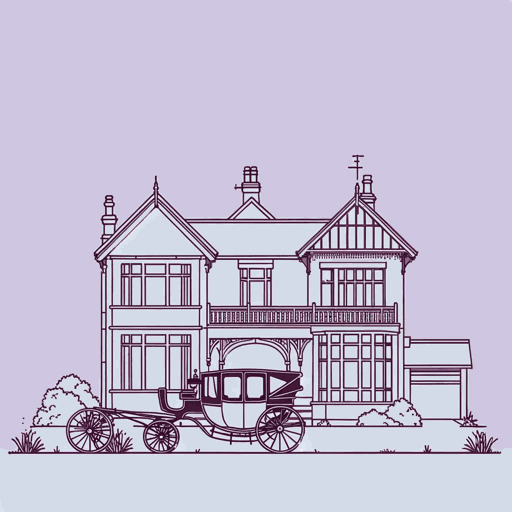
A Scandal in Bohemia

A Study in Scarlet

His Last Bow
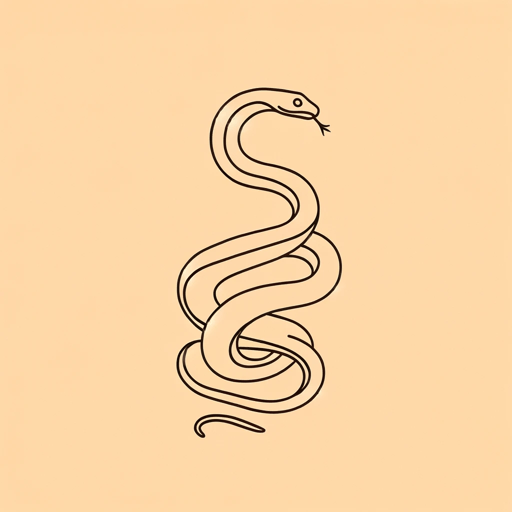
The Adventure of the Speckled Band

The Hound of the Baskervilles

The Lost World

The Sign of the Four
The Valley of Fear
Featured Collections
Books on Justice & Injustice
View Collection
Popular Book Club Picks
Teams & Gangs
Truth & Lies

- English Literature
- Short Stories
- Literary Terms
- Web Stories
Sir Arthur Conan Doyle Biography and Works

Table of Contents
Why is Sir Arthur Conan Doyle important?,How many books did Arthur Conan Doyle write?,where was arthur conan doyle born,arthur conan doyle familySir Arthur Ignatius Conan Doyle, a name synonymous with mystery, detective fiction, and the indomitable Sherlock Holmes, stands as a towering figure in Scottish literature. Born on May 22, 1859, in Edinburgh, Scotland, Conan Doyle’s influence reaches far beyond his iconic detective stories.S ir Arthur Conan Doyle Biography and Works

Early Life and Education:
Conan Doyle hailed from an artistic Catholic family, with his father, Charles Altamont Doyle, being an artist, and his mother, Mary Foley, a vibrant storyteller. Despite financial struggles, young Arthur’s imagination thrived on the tales of chivalry spun by his mother. Educated at the Jesuit preparatory school Stonyhurst College, Conan Doyle later pursued medicine at the University of Edinburgh. His experiences at medical school significantly influenced his creation of the rational and analytical character, Sherlock Holmes.
Medical Career and Writing Beginnings:
After a brief stint as a ship’s surgeon that took him to West Africa and the Arctic Circle, Conan Doyle returned to Edinburgh to establish a medical practice. However, his love for storytelling soon eclipsed his medical career. Early attempts at writing involved contributing short stories to various magazines. In 1887, Conan Doyle achieved literary success with the publication of “A Study in Scarlet,” introducing the world to Sherlock Holmes.
The Sherlock Holmes Phenomenon:
Sherlock Holmes, with his razor-sharp powers of observation and deductive reasoning, became a global literary sensation. The serialization of Holmes’ adventures in The Strand Magazine propelled Conan Doyle to literary stardom. Despite reservations about being exclusively associated with Holmes, Conan Doyle continued to pen stories, including the celebrated novel “The Hound of the Baskervilles” (1902). Sir Arthur Conan Doyle Biography and Works
Literary Diversity and Exploits:
Conan Doyle’s literary repertoire expanded beyond detective fiction. He delved into historical novels, science fiction, and adventure tales. Works like “Micah Clarke” (1889) and “The White Company” (1891) showcased his storytelling prowess in historical settings.
The Professor Challenger series, commencing with “The Lost World” (1912), ventured into science fiction, exploring the adventures of the brilliant and eccentric scientist. Conan Doyle’s interest in spiritualism found expression in works like “The Land of Mist” (1926), reflecting the early 20th-century fascination with the supernatural.
Military Service and World War I:
As World War I erupted, Conan Doyle, despite being in his fifties, volunteered for military service. Serving as a major in the Royal Army Medical Corps and later as a lieutenant colonel in the War Office, his experiences during the war, including the loss of his son, profoundly influenced him and impacted his later works.
Personal Life:
Conan Doyle’s personal life was marked by both tragedy and triumph. His marriage to Louisa Hawkins in 1885 resulted in two children, but tragedy struck when Louisa died of tuberculosis in 1906. Devastated, Conan Doyle remarried Jean Leckie in 1907, and the couple had three children, bringing a new chapter of happiness to his life.
Spiritualism and Controversies:
Conan Doyle’s interest in spiritualism intensified after the death of his son Kingsley in World War I. He became an advocate, attending seances and endorsing mediums. This interest led to controversies, with skeptics challenging his scientific background and credibility.
Later Years and Legacy:
In the later years of his life, Conan Doyle continued to write and engage in public debates. Knighted in 1902 for his contributions to literature, he passed away on July 7, 1930, at the age of 71. His legacy endures through his diverse literary contributions, with Sherlock Holmes remaining a cultural phenomenon and a symbol of detective fiction.
Major Works
- “A Study in Scarlet” (1887): The debut novel introducing Sherlock Holmes and Dr. John Watson, setting the stage for a series of detective stories.
- “The Adventures of Sherlock Holmes” (1892): A collection of short stories featuring Holmes and Watson, including classics like “The Adventure of the Speckled Band” and “The Red-Headed League.”
- “The Hound of the Baskervilles” (1902): A standalone novel often considered one of the greatest detective stories, where Holmes investigates a legendary hound on the moors.
- “The Return of Sherlock Holmes” (1905): Another collection of short stories, marking Holmes’ return after his presumed death at the Reichenbach Falls.
- “Micah Clarke” (1889): A historical adventure novel set during the Monmouth Rebellion in the 17th century.
- “The White Company” (1891): A historical adventure set during the Hundred Years’ War, showcasing the exploits of a free company of archers.
- “The Lost World” (1912): A pioneering science fiction novel introducing Professor Challenger, who leads an expedition to a remote plateau where prehistoric creatures still exist.
- “Sir Nigel” (1906): A novel set during the Hundred Years’ War, following the adventures of Nigel Loring, a young squire.
- “The Exploits of Brigadier Gerard” (1896): A collection of short stories narrated by Brigadier Gerard, a Hussar officer during the Napoleonic Wars.
- “The Poison Belt” (1913): A science fiction novel featuring Professor Challenger and his colleagues, exploring the apocalyptic consequences of Earth passing through a belt of poisonous ether.
- “The Land of Mist” (1926): A novel delving into spiritualism and the supernatural, reflecting Conan Doyle’s personal interest in these themes.
Writing Style
- Conan Doyle’s writing style is marked by clarity and precision. His narratives are easy to follow, allowing readers to immerse themselves in the intricacies of the plot without unnecessary complexity.
- Conan Doyle excels in character development, particularly in the Sherlock Holmes series. The characters, especially Holmes and Watson, are vividly portrayed with distinct personalities, quirks, and evolving relationships.
- The author pays meticulous attention to detail, whether describing crime scenes, historical settings, or scientific concepts. This attention to detail enhances the realism of his stories and contributes to the immersive experience for the reader.
- Many of Conan Doyle’s works, especially the Sherlock Holmes series, utilize a first-person narrative, often through the perspective of Dr. John Watson. This choice allows readers to view the detective’s genius through the eyes of a close confidant.
- Conan Doyle’s versatility is evident in his exploration of various genres, from detective fiction to historical novels, science fiction, and spiritualism. His ability to adapt his writing style to suit different themes showcases his literary prowess.
- Dialogues in Conan Doyle’s works, especially those involving Sherlock Holmes, are notable for their wit and intelligence. Holmes’ deductive reasoning and sharp repartees contribute to the enduring appeal of the characters.
- Conan Doyle is adept at constructing engaging and intricate plots. The mysteries in the Sherlock Holmes stories, in particular, are carefully crafted, with twists and turns that keep readers captivated until the resolution.
- Beyond the surface-level mysteries, Conan Doyle’s works often explore deeper themes, such as justice, morality, and the human condition. This thematic depth adds layers to his stories, making them enduring and thought-provoking.
Sir Arthur Conan Doyle , a literary luminary of the late 19th and early 20th centuries, has left an indelible mark on literature with his diverse and enduring works. From the immortal detective Sherlock Holmes to historical novels, science fiction, and explorations of spiritualism, Conan Doyle showcased remarkable versatility and literary prowess. Sir Arthur Conan Doyle Biography and Works
His writing style, characterized by clarity, meticulous detail, and engaging plots, has transcended time, making his works accessible and enjoyable for readers across generations. The richness of his characters, particularly Sherlock Holmes and Dr. John Watson, adds depth to his narratives.
Conan Doyle’s impact extends beyond the literary realm; his legacy endures as a pioneer in detective fiction and a master storyteller who navigated various genres with finesse. Through his contributions, he has become a perennial figure in the pantheon of literary greats.Why is Sir Arthur Conan Doyle important?,How many books did Arthur Conan Doyle write?,where was arthur conan doyle born,arthur conan doyle family
1. What are Sir Arthur Conan Doyle’s most famous works?
Sir Arthur Conan Doyle’s most famous works include the Sherlock Holmes series, with notable titles such as “A Study in Scarlet,” “The Adventures of Sherlock Holmes,” and “The Hound of the Baskervilles.” Other renowned works include “The Lost World,” “Micah Clarke,” and “The White Company.”
2. How would you describe Conan Doyle’s writing style?
Conan Doyle’s writing style is marked by clarity, precision, and meticulous attention to detail. He excels in character development, uses first-person narratives effectively, and demonstrates versatility across diverse genres. His engaging plots and thematic depth contribute to the enduring appeal of his works.
3. How did Conan Doyle’s personal experiences influence his works?
Conan Doyle’s personal experiences, including his medical career, military service during World War I, and interest in spiritualism, had a profound impact on his writings. These experiences added depth and authenticity to his characters and themes, enriching the narratives in his diverse works.
Related Posts

Smaro Kamboureli Biography and Work

Linda Hutcheon biography and Works

Northrop Frye Biography and Works

Attempt a critical appreciation of The Triumph of Life by P.B. Shelley.

Consider The Garden by Andrew Marvell as a didactic poem.

Why does Plato want the artists to be kept away from the ideal state

MEG 05 LITERARY CRITICISM & THEORY Solved Assignment 2023-24

William Shakespeare Biography and Works

Discuss the theme of freedom in Frederick Douglass’ Narrative of the Life of Frederick Douglass

How does William Shakespeare use the concept of power in Richard III

Analyze the use of imagery in William Shakespeare’s sonnets
Which australian author wrote “the slap”, what role does the outback play in australian literature.

Poem Summary Fear by Gabriela Mistral Line by Line Explanation
1500 words essay on earlier form of fiction with authors in english.
- Advertisement
- Privacy & Policy
- Other Links
© 2023 Literopedia
Welcome Back!
Login to your account below
Remember Me
Retrieve your password
Please enter your username or email address to reset your password.
Are you sure want to unlock this post?
Are you sure want to cancel subscription.
The Adventures of Sherlock Holmes
By sir arthur conan doyle, the adventures of sherlock holmes summary and analysis of "the man with the twisted lip".
At the behest of one of his wife's friends, Watson goes to Upper Swandam Lane, a notorious neighborhood, to look for the friend's husband in an opium den. After finding the man, Watson runs into Holmes in disguise, who explains that he is working a case on the disappearance of a man named Neville St. Clair .
Mrs. St. Clair had explained to Holmes that she unexpectedly saw her husband in the window of the opium den and that when she went in to look for him, he had disappeared. All that were left in the room with Hugh Boone, a professional beggar, were Mr. St. Clair's clothes. Boone is imprisoned on suspicion of having had something to do with St. Clair's disappearance.
Holmes, however, deduces that Boone is in fact St. Clair in disguise, which he proves by wiping the stage cosmetics from Boone's face in the prison. St. Clair/Boone explains that he figured out he could make a solid living by begging in disguise but does not want his wife to find out. Holmes makes him swear not to do so again.
There are several red herrings in this story that are meant to mislead the reader and do in fact mislead Holmes, even though they were not planted by the intention of any villain. This demonstrates that in Holmes' detective work, not every clue leads in a straightforward manner to an accurate conclusion about the truth of the case and that Holmes, just as the reader, can become confused.
This story is also perhaps the only one in which the usual opposition of villain and victim is played with, so that the suspected villain is in fact the victim, and the victim is in fact the one who caused the mystery and potential harm in the first place. As in "A Case of Identity," the clever use of a disguise and acting allow for a character to assume another identity for the sake of financial gain, which is an element that firmly roots even the most outlandish of mysteries in the most mundane of realities. It also suggests, in the case of the present story, the kind of socioeconomic problems that motivate many of the crimes or partial crimes. St. Neville resorted to begging full-time because his newspaper employment was unfulfilling and not well-paying, and he was able to pull begging off as a job because of its established place in society.

The Adventures of Sherlock Holmes Questions and Answers
The Question and Answer section for The Adventures of Sherlock Holmes is a great resource to ask questions, find answers, and discuss the novel.
The Adventure of the Three Students
What is your question here?
What is the character traits of Sherlock Holmes?
Holmes's chief characteristic and his most useful trait is his cold, calculating mind and his method of deduction. He is able to devise theories to explain crimes with the smallest amount of evidence. He, as he constantly tells Watson, sees what...
Study Guide for The Adventures of Sherlock Holmes
The Adventures of Sherlock Holmes study guide contains a biography of Sir Arthur Conan Doyle, quiz questions, major themes, characters, and a full summary and analysis.
- About The Adventures of Sherlock Holmes
- The Adventures of Sherlock Holmes Summary
- Character List
Essays for The Adventures of Sherlock Holmes
The Adventures of Sherlock Holmes essays are academic essays for citation. These papers were written primarily by students and provide critical analysis of The Adventures of Sherlock Holmes by Sir Arthur Conan Doyle.
- Sherlock Holmes’ Mentorship of Christopher Boone
- With Holmes in Mind: Christopher's Extended Allusion
- The Effects of Aging on the Well-Known Sherlock Holmes
- “The Woman”: How Multiple Texts Failed Irene Adler
- “The Adventure of the Speckled Band”: The Peculiarities of the Genre
Lesson Plan for The Adventures of Sherlock Holmes
- About the Author
- Study Objectives
- Common Core Standards
- Introduction to The Adventures of Sherlock Holmes
- Relationship to Other Books
- Bringing in Technology
- Notes to the Teacher
- Related Links
- The Adventures of Sherlock Holmes Bibliography
Wikipedia Entries for The Adventures of Sherlock Holmes
- Introduction
- Critical reception
- Adaptations
11 afleveringen
Sherlock Holmes is a fictional detective of the late 19th and early 20th centuries, who first appeared in publication in 1887. He was devised by Scottish author and doctor Sir Arthur Conan Doyle. A brilliant London-based detective, Holmes is famous for his prowess at using logic and astute observation to solve cases. He is perhaps the most famous fictional detective, and indeed one of the best known and most universally recognizable literary characters. Join Dr. Watson and Sherlock Holmes, in Holmes' fourth book. (summary from Wikipedia and TBOL3)
Memoirs of Sherlock Holmes, The by Sir Arthur Conan Doyle (1859 - 1930) LibriVox
- 14 NOV. 2021
Silver Blaze
The yellow face, the stock-broker's clerk, the "gloria scott", the musgrave ritual, the reigate puzzle, top-podcasts in kunst, suggesties voor jou.
Focus on Eyes: Sir Arthur Conan Doyle, Jules Stein started out as ophthalmologists

What did Sir Arthur Conan Doyle and Jules Stein have in common?
They were both trained as ophthalmologists.
Most ophthalmologists focus on the management of eye diseases and performance of eye surgeries.
Some participate in research to understand visual functions and to advance diagnoses and treatments of eye conditions.
A few of them become famous and successful outside of medicine.
Dr. Ho's previous columns:
A-Eye: Eye doctors use artificial intelligence to help with diagnoses, surgeries
P-eye-oneer: Dr. Isabel Barrows was a pioneer in the field of ophthalmology
Moving ahead: Advancements in macular degeneration, thyroid eye disease, eye infection treatment
Sir Arthur Conan Doyle
Sir Arthur Conan Doyle was most famous for creating the characters of Sherlock Holmes and Dr. John Watson.
He studied medicine at the University of Edinburgh where he observed the diagnostic acumen of Dr. Joseph Bell.
After working as a ship surgeon and a medical practitioner in Plymouth, he went to Vienna to study ophthalmology.
He also spent time in Paris with Dr. Edmund Landolt, a famous French ophthalmologist and eye surgeon. He returned to England and opened an ophthalmology practice in London.
Both his medical practice and ophthalmology practice were unsuccessful.
While waiting for patients, Doyle continued his writing of fiction, which began during his medical study. His detective character, Sherlock Holmes, was modeled after Dr. Bell.
Holmes appeared to Dr. Watson to have an amazing ability to solve crimes based on observation and deduction. With a successful literary career, Doyle eventually left the practice of ophthalmology and medicine.
Jules Stein
Jules Stein graduated from the University of Chicago with a bachelor degree at age 18 and studied medicine at Rush Medical College.
He received his ophthalmology training at the University of Vienna and Cook County Hospital in Chicago. He became a board certified ophthalmologist.
Dr. Stein was a gifted musician who financed his education by playing and leading bands. He went into booking when he was unable to fulfill one of his own band commitments.
Eventually he concentrated on booking other musicians. With success in the entertainment business, he gave up the practice of ophthalmology.
Dr. Stein was the founder of Music Corporation of America (MCA). MCA became a major talent agency for musicians, including Ted Weems and Benny Goodman and Hollywood stars such as Ronald Reagan, Bette Davis and Frank Sinatra.
Dr. Stein maintained his interest in ophthalmology. He helped to found the Research to Prevent Blindness, which is a non-profit organization in the support of eye research.
He provided funding for the Jules Stein Eye Institute at the University of California, Los Angeles. He lobbied Congress for passage of legislation to establish the National Eye Institute in Bethesda, Maryland.
There are other ophthalmologists who made contributions outside of medicine.
Dr. Jose Rizal was a revolutionary leader in the overthrow of Spanish rule in the Philippines.
Dr. Renee Richards who was the first transgender professional tennis player and advocated for transgender rights.
Dr. Frederick Ho, the medical director of Atlantic Eye MD and Atlantic Surgery and Laser Center, is a board certified ophthalmologist. Atlantic Eye MD is located at 8040 N. Wickham Road in Melbourne. To make an appointment please call (321) 757-7272. To learn more visit AtlanticEyeMD.com.

The Lord of Chateau Noir by Sir Arthur Conan Doyle
- Feb 19 2024
- Length: 32 mins
Failed to add items
Add to cart failed., add to wish list failed., remove from wishlist failed., adding to library failed, follow podcast failed, unfollow podcast failed.

What listeners say about The Lord of Chateau Noir by Sir Arthur Conan Doyle
Reviews - please select the tabs below to change the source of reviews., audible.com reviews, amazon reviews.
- Help Center
- Redeem promo code
- About Audible
- Business Inquiries
- Audible in the News
- Accessibility
- ACX for Creators
- Bestsellers
- New York Times Best Sellers
- New releases
- Non-English Audiobooks
- Latino & Hispanic Voices
- Audible in Chinese
- How to listen
- Listen on Apple Devices
- Listen in the car
- Whispersync for Voice

IMAGES
VIDEO
COMMENTS
Arthur Conan Doyle (born May 22, 1859, Edinburgh, Scotland—died July 7, 1930, Crowborough, Sussex, England) was a Scottish writer best known for his creation of the detective Sherlock Holmes —one of the most vivid and enduring characters in English fiction. Conan Doyle, the second of Charles Altamont and Mary Foley Doyle's 10 children ...
Sir Arthur Ignatius Conan Doyle KStJ, DL (22 May 1859 - 7 July 1930) was a British writer and physician. He created the character Sherlock Holmes in 1887 for A Study in Scarlet, the first of four novels and fifty-six short stories about Holmes and Dr. Watson.The Sherlock Holmes stories are milestones in the field of crime fiction. Doyle was a prolific writer; other than Holmes stories, his ...
Arthur Conan Doyle, detail of a portrait by H.L. Gates, 1927; in the National Portrait Gallery, London. Sir Arthur Conan Doyle, (born May 22, 1859, Edinburgh, Scot.—died July 7, 1930, Crowborough, Sussex, Eng.), Scottish writer. He became a doctor and practiced until 1891, studying with Dr. Joseph Bell, who was the model for his fictional ...
In 1890, Arthur Conan Doyle's novel, A Study in Scarlet introduced the character of Detective Sherlock Holmes. Doyle would go on to write 60 stories about Sherlock Holmes. He also strove to spread ...
Arthur Conan Doyle (1859-1930) Arthur Ignatius Conan Doyle was born in Edinburgh, Scotland, on May 22, 1859, the third of ten children of an Irish painter who specialized in fantasy scenes. Conan Doyle was sent to England at age nine to attend Jesuit boarding school, an experience he loathed. At the school, however, he exhibited a talent for ...
Biography Childhood. Birth, Family. Arthur Conan Doyle was born on 22 may 1859, at Picardy Place, Edinburgh, Scotland. His mother, Mary Josephine Foley, was Irish and descendant of the famous Percy family of Northumberland, in the line of Plantagenet.His father, Charles Altamont Doyle, was a not very ambitious officer with some artistic talent .When he lost his job, he sank into alcoholism and ...
Sir Arthur Conan Doyle (22 May 1859 - 7 July 1930) - Scottish writer, physician and spiritualist - best known for his Sherlock Holmes stories. Sir Arthur Conan Doyle was born in Picardy Place, Edinburgh, Scotland in 1859. At school, he developed a talent for storytelling in the dormitories after lights. He nursed ambitions to […]
Portrait of Sir Arthur Conan Doyle, c.1925 ... Arthur Conan Doyle was born on 22 May 1859 in Edinburgh into a prosperous Irish family. He trained as a doctor, gaining his degree from Edinburgh ...
When left to himself, Arthur loved to read American "wild west" adventure stories, especially those of Bret Harte and Thomas Mayne Reid, an Irish immigrant to the U.S. who wrote The Scalp Hunters (1851), young Arthur's favorite book. As an adult, Conan Doyle felt that the highest vocation he could pursue as a writer was to create well ...
Introduction. Sir Arthur Conan Doyle is known all over the world as the creator of one of the most famous fictional characters in English literature, the master detective Sherlock Holmes, but he was much more than the originator of modern detective literature. He was a man of many talents and pursuits: a medical doctor, multi-talented sportsman ...
Summary. Sir Arthur Conan Doyle's biographers agree in describing him as typical of the late Victorian era. He remained confident throughout his life of the soundness of his own moral vision and ...
He was married twice. The death of his son Kingsley in World War I intensified Doyle's interest in psychic phenomena; in his later years he wrote and lectured on spiritualism. He died in Sussex on July 7, 1930. (1859-1930). A Scottish physician who turned to writing, Arthur Conan Doyle thought he would be remembered for his historical novels.
Arthur Conan Doyle (22 May 1859 - 7 July 1930). M.D., Kt, ... Spiritualist... The Arthur Conan Doyle Encyclopedia is an online repository of all works written by Sir Arthur Conan Doyle (fictions, essays, articles, poems, plays, lectures, letters, manuscripts...), but also any materials related to him (newspaper articles, interviews, photos ...
Arthur Conan Doyle KStJ, DL (1859-1930) was a Scottish writer and physician. In addition to the series of stories chronicling the activities of Sherlock Holmes and his friend Dr John Watson for which he is well known, Doyle wrote on a wide range of topics, both fictional and non-fictional. In 1876 Doyle entered the University of Edinburgh Medical School, where he became a pupil of Joseph ...
Sir Arthur Conan Doyle was born in 1859 in Edinburgh, Scotland. A prolific writer of much renown, his books were mostly detective fiction. He is most famous for the Sherlock Holmes stories, but also wrote such things as the Lost World. He also popularized the mystery of the wreck of the Mary Celeste, and wrote about Professor Challenger, a rude ...
Rathbone, Basil. Basil Rathbone as Sherlock Holmes in one of several movies in which he played the detective created by Sir Arthur Conan Doyle. (more) Sherlock Holmes, fictional character created by the Scottish writer Arthur Conan Doyle. The prototype for the modern mastermind detective, Holmes first appeared in Conan Doyle's A Study in ...
The Adventures of Sherlock Holmes study guide contains a biography of Sir Arthur Conan Doyle, quiz questions, major themes, characters, and a full summary and analysis. About The Adventures of Sherlock Holmes; The Adventures of Sherlock Holmes Summary; Character List; Glossary; Themes; Read the Study Guide for The Adventures of Sherlock Holmes…
The Adventures of Sherlock Holmes study guide contains a biography of Sir Arthur Conan Doyle, quiz questions, major themes, characters, and a full summary and analysis. About The Adventures of Sherlock Holmes; The Adventures of Sherlock Holmes Summary; Character List; Glossary; Themes; Read the Study Guide for The Adventures of Sherlock Holmes…
Sir Arthur Conan Doyle's (1859-1930) The Adventures of Sherlock Holmes was published in 1892 as a collection of 12 short stories.The texts detail some of the earliest cases of the fictional detective Sherlock Holmes as narrated by his friend and collaborator, Doctor John Watson.The stories appear in the order in which they were originally published in The Strand Magazine.
The Adventures of Sherlock Holmes study guide contains a biography of Sir Arthur Conan Doyle, quiz questions, major themes, characters, and a full summary and analysis. About The Adventures of Sherlock Holmes; The Adventures of Sherlock Holmes Summary; Character List; Glossary; Themes; Read the Study Guide for The Adventures of Sherlock Holmes…
1913. Series. His Last Bow. " The Adventure of the Dying Detective ", in some editions simply titled " The Dying Detective ", is one of the 56 Sherlock Holmes short stories that were written by Sir Arthur Conan Doyle. It was originally published in Collier's in the United States on 22 November 1913, and The Strand Magazine in the United Kingdom ...
Sir Arthur Conan Doyle's most famous works include the Sherlock Holmes series, with notable titles such as "A Study in Scarlet," "The Adventures of Sherlock Holmes," and "The Hound of the Baskervilles.". Other renowned works include "The Lost World," "Micah Clarke," and "The White Company.". 2.
Arthur Conan Doyle (prononcé en anglais : / ˈ ɑ ː θ ə ˈ k ə ʊ n ə n d ɔ ɪ l /) [1], né Arthur Ignatius Conan Doyle le 22 mai 1859 à Édimbourg en Écosse et mort le 7 juillet 1930 à Crowborough (Sussex de l'Est), est un écrivain et médecin écossais. Conan est son troisième prénom et son nom de famille est Doyle, mais il signe la plupart de ses écrits sous le nom de « A ...
Arthur Conan Doyle. Arthur Ignatius Conan Doyle ( Edimburgo, 22 de mayo de 1859- Crowborough, 7 de julio de 1930) 1 fue un escritor y médico británico de ascendencia irlandesa, 2 creador del célebre detective de ficción Sherlock Holmes. Fue un autor prolífico cuya obra incluye relatos de ciencia ficción, novela histórica, teatro y poesía.
Summary. At the behest of one of his wife's friends, Watson goes to Upper Swandam Lane, a notorious neighborhood, to look for the friend's husband in an opium den. After finding the man, Watson runs into Holmes in disguise, who explains that he is working a case on the disappearance of a man named Neville St. Clair.
Sherlock Holmes is a fictional detective of the late 19th and early 20th centuries, who first appeared in publication in 1887. He was devised by Scottish author and doctor Sir Arthur Conan Doyle. A brilliant London-based detective, Holmes is famous for his prowess at using logic and astute observation to solve cases.
Sir Arthur Conan Doyle was most famous for creating the characters of Sherlock Holmes and Dr. John Watson. He studied medicine at the University of Edinburgh where he observed the diagnostic ...
Summary; Black Castle ke Count ko pakadne nikle Captain Baumgarten apne sainiko ke saath. Par kaala mehal pahuchne ke baad palat gayi baazi, ban gaye bandi khud Captain Baumgarten. ... CREDITS: Story - Sir Arthur Conan Doyle Hindi adaptation of story - Upendra Kumar Yadav Script Supervisor - Ranjit Madgavkar Narrator and The Count of Chateau ...